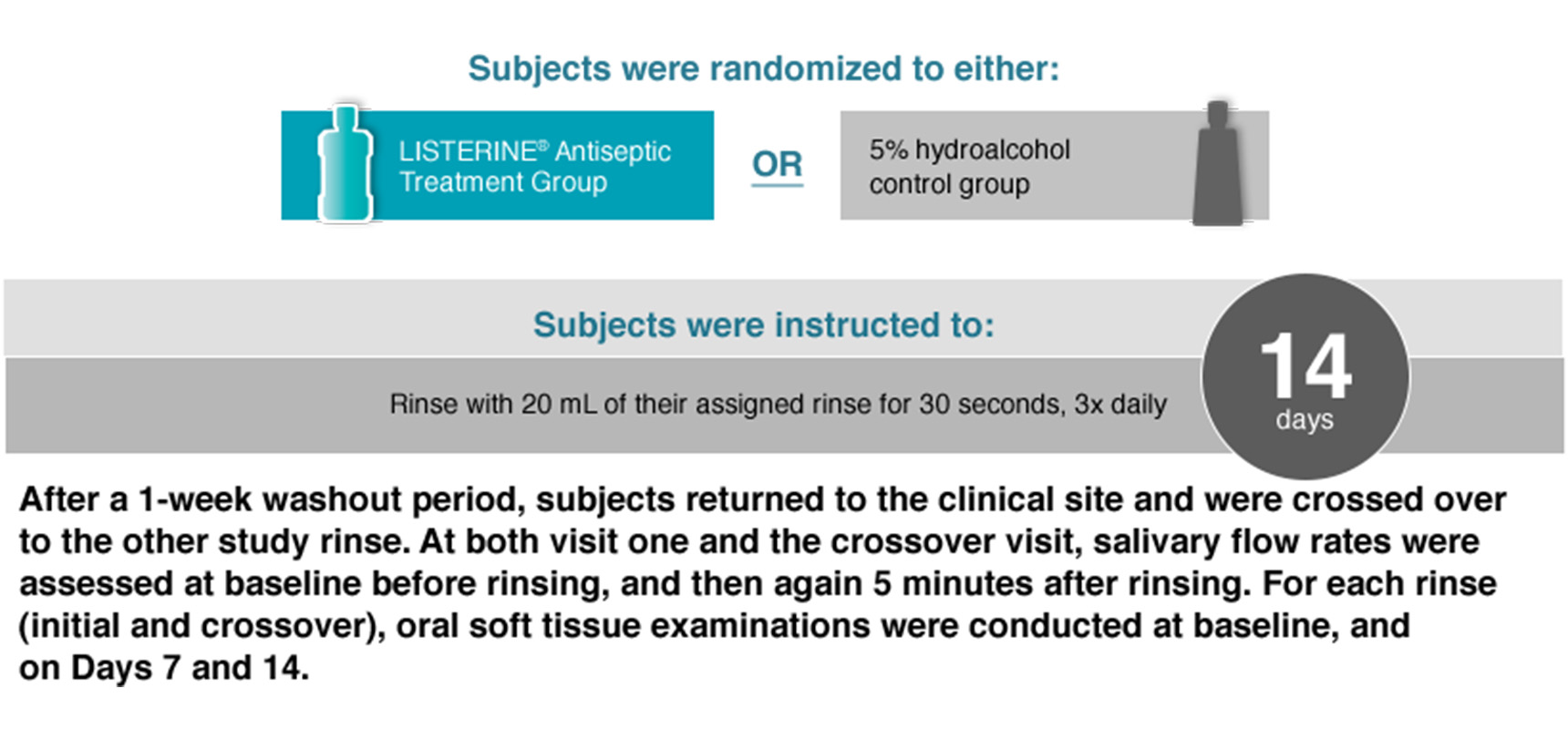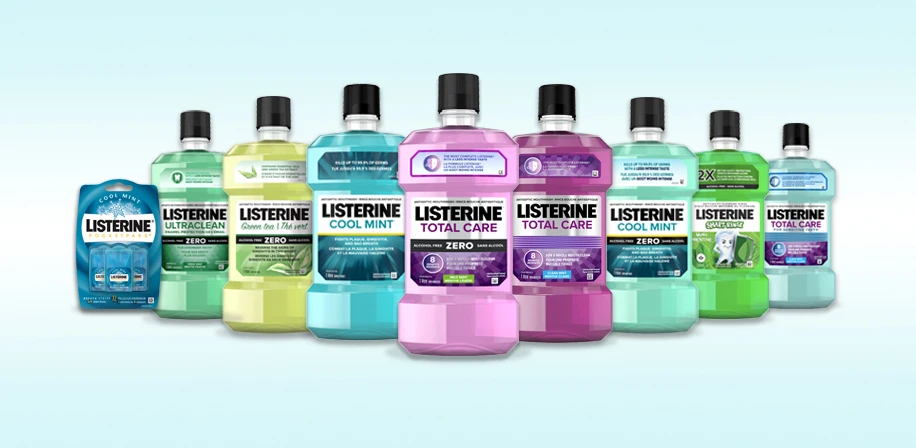Use of essential oil-containing mouthrinses by xerostomic individuals: determination of potential for oral mucosa irritation23
- Fischman SL, Aguirre A, Charles CH. Am J Dent. 2004;17(1):23-36.
Objective
Assess the irritation potential of an essential oil-containing mouthrinse (LISTERINE® Antiseptic) in a population with objectively documented xerostomia (hyposalivation) using an exaggerated-exposure clinical model (N=18).
Methodology
Observer-blinded crossover study of subjects (aged ≥18 years) with a history of xerostomia secondary to medication or Sjorgren’s syndrome and an unstimulated salivary flow rate of <0.25 mL/minute.

Results
The oral irritation potential of the essential oil mouthrinse was minimal.
All subjects tolerated the mouthrinses well
With the exception of 2 subjects, none developed oral mucosal lesions during the course of the study that could be attributable to the test rinses
2 subjects had an asymptomatic “whitish slough” of the buccal mucosae after rinsing with the essential oil mouthrinse for 7 days (wiped off readily, leaving a normal appearing, non-erythematous mucosa). In both subjects, the mucosae appeared normal at the 14-day exam.
Conclusion
LISTERINE® Antiseptic does not dry out tissues and may increase the salivary flow rate.
Exaggerated use of the essential oil mouthrinse did not result in any observed oral dryness compared to the control rinse or in a clinically significant difference in oral irritation, even in this xerostomic population that would be the most vulnerable to “drying.”

LISTERINE® Antiseptic
Explore our wide selection of LISTERINE® Antiseptic products

